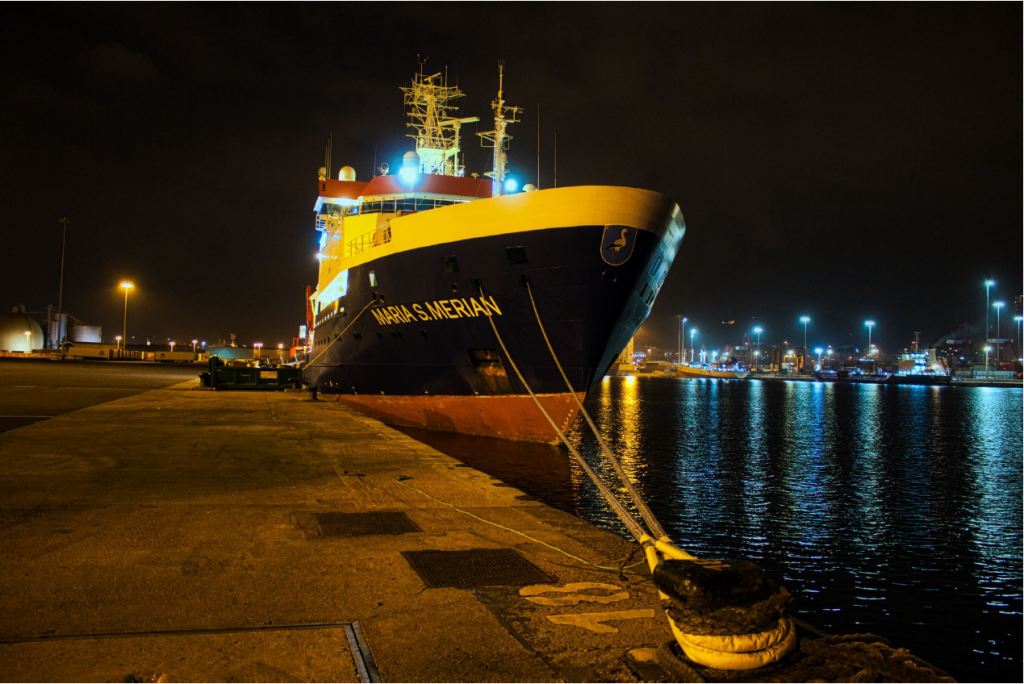17.05.-19.05.2019
Last Friday, 17.05.2019, the research vessel Maria S. Merian left the bunker pier of Las Palmas, Gran Canaria, at pleasant warm temperatures to set out on her cruise MSM83. Over the next few weeks, teams from the University of Bremen (IUP/MARUM) and the Federal Maritime and Hydrographic Agency (BSH) Hamburg will carry out physical-oceanographic studies of ocean circulation and water mass exchange in the North Atlantic. Furthermore, two colleagues from the Canadian Universities of Alberta and Quebec and a colleague from the University of Heidelberg, who will take water samples to determine the argon content in the ocean, accompany and support us.

The research objectives of our cruise focus on the strength and variability of the large-scale ocean currents in the subpolar North Atlantic and the entrained water masses. In the coming weeks we will cross the North Atlantic from east to west at about 47°/48°N. During our cruise MSM73 last year we deployed along this latitude several deep-sea moorings and bottom-mounted sensors near the eastern and western edges of the Atlantic, as well as in the deep basins east and west of the Mid-Atlantic Ridge. With these data and the ship-based measurements, we want to determine how much warm and saline water from the subtropics flows across 47°N into the North Atlantic and how much cold and fresh water flows from the subarctic region exits to the south. Knowledge about variations on time scales from days to decades are important in order to obtain an improved understanding of the physical processes that influence the strength and variation of the circulation of the Atlantic and its components at 47°/48°N.
In the first days of the cruise, we had a 5-day transit to the Irish shelf at Goban Spur. We used this time to prepare all scientific instruments and laboratory analysis equipment for the upcoming use. We got a first impression of higher swells and wind forces around 7 Bf already on the first day after departure. On Sunday, the sea calmed down and made a very pleasant cruising to the north possible.
Next week, we plan to carry out the first ship-based surveys of the water masses and currents near the Irish shelf, as well as recover and redeploy the moorings from the eastern boundary current deployed last year. Best wishes on behalf of all cruise participants and our thanks to Captain Maaß and his crew of RV Maria S. Merian for the very warm welcome here onboard,
Dagmar Kieke (Chief Scientist)
